
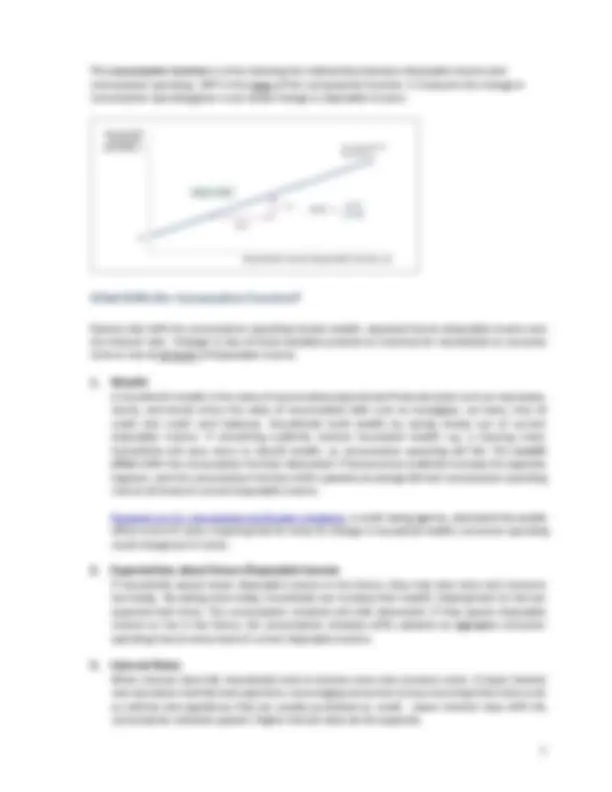
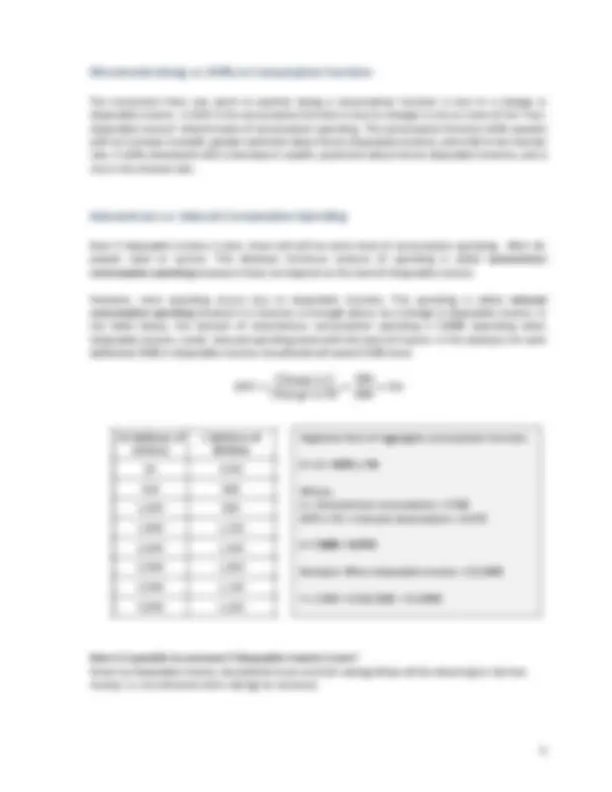
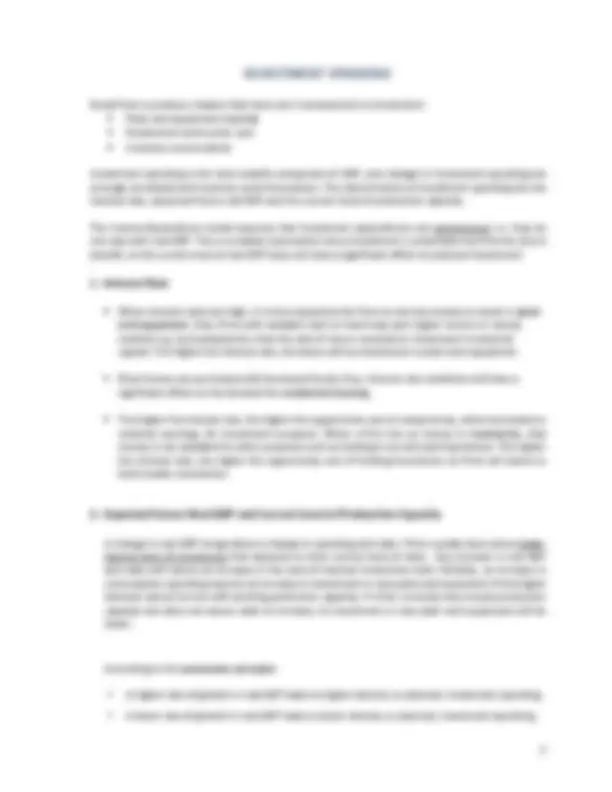
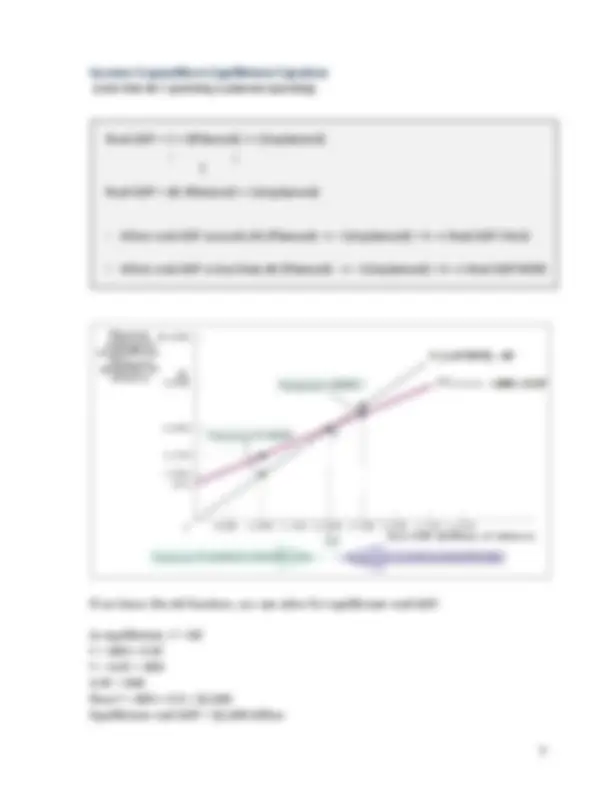
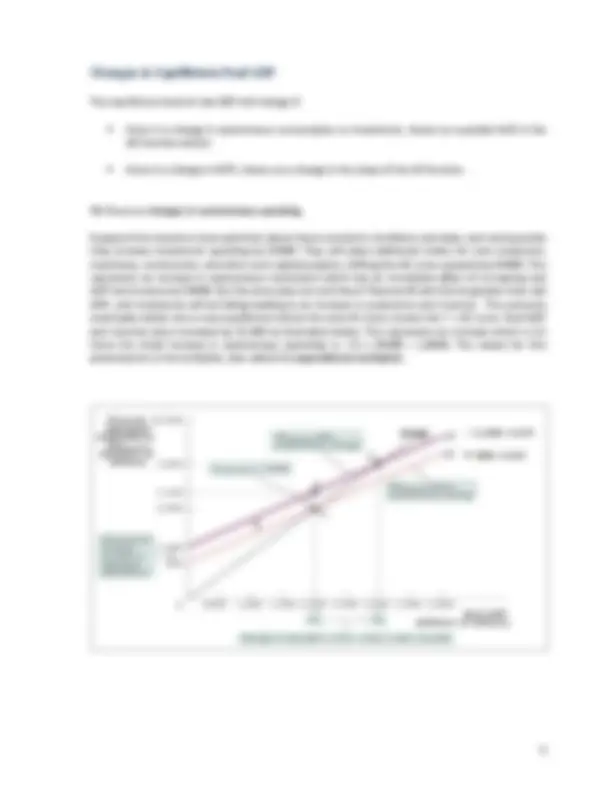
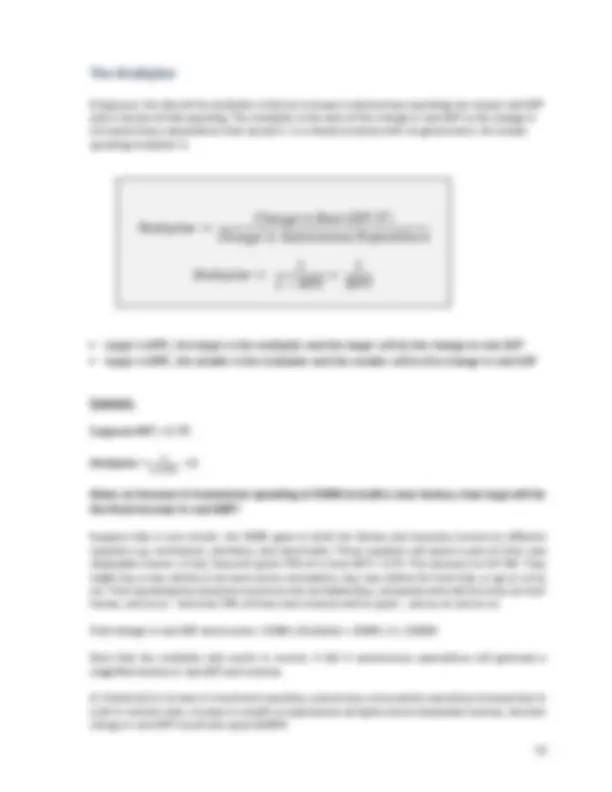
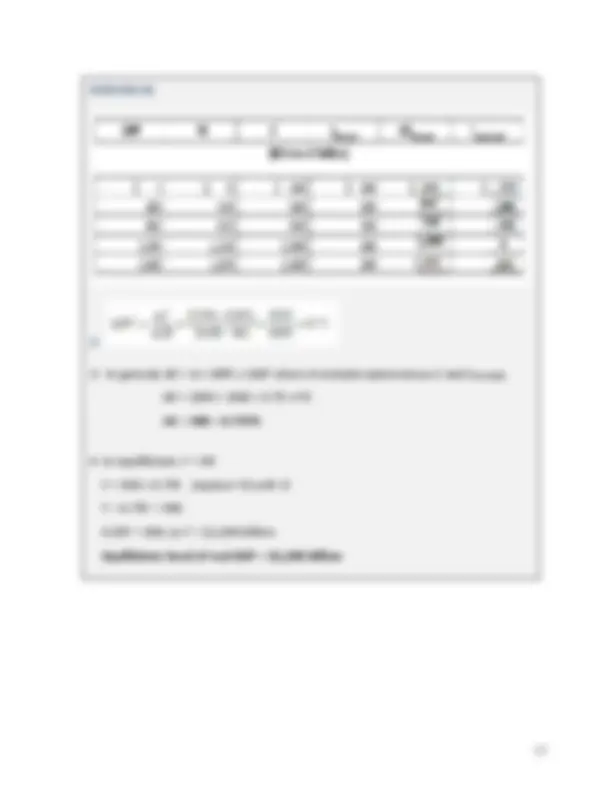
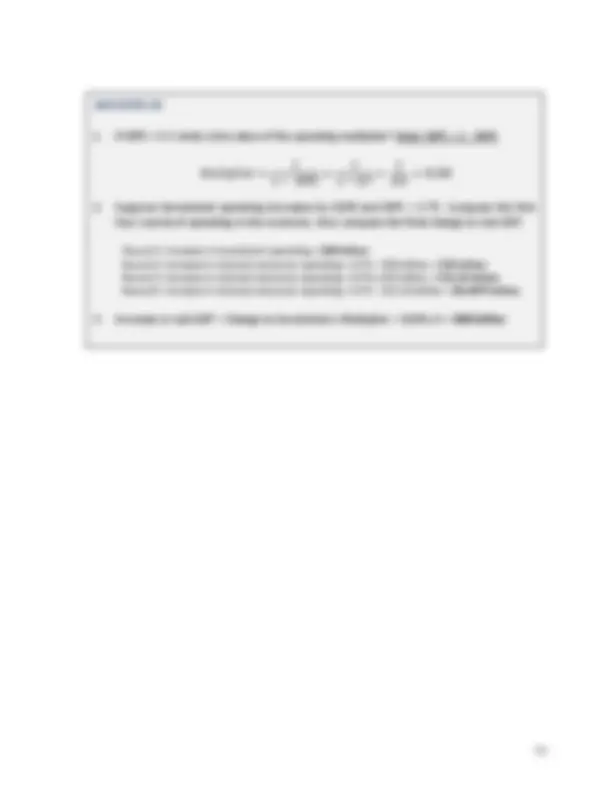


Study with the several resources on Docsity

Earn points by helping other students or get them with a premium plan


Prepare for your exams
Study with the several resources on Docsity

Earn points to download
Earn points by helping other students or get them with a premium plan
Community
Ask the community for help and clear up your study doubts
Discover the best universities in your country according to Docsity users
Free resources
Download our free guides on studying techniques, anxiety management strategies, and thesis advice from Docsity tutors
The aggregate consumption function which shows the relationship between current consumption expenditures and current disposable income • The difference between autonomous and induced consumption spending • The determinants of planned aggregate expenditure (consumption and investment) the price level is fixed • The difference between planned (desired) investment spending and unplanned (undesired) investment
Typology: Lecture notes
1 / 14

This page cannot be seen from the preview
Don't miss anything!









This chapter examines two important questions:
Because the price level is fixed: Real GDP = Nominal GDP Because there is no government (no transfers or taxes): Real GDP = Disposable income
For instance, if $500 billion worth of output is produced i.e. real GDP = $500B, households will receive exactly $500 billion in disposable income that they can either consume or save. Because we assume a closed economy with no government, there are only two components of aggregate expenditure in our simple income-Expenditure model: Consumption spending (C) and Investment spending (I). We develop our model by starting with the first component of aggregate expenditure, consumption spending. CONSUMPTION SPENDING and the AGGREGATE CONSUMPTION FUNCTION
The marginal propensity to consume (MPC) measures the fraction of an additional dollar of disposable income received that is consumed: The marginal propensity to save (MPS) is the fraction of an additional dollar of disposable income that is saved. MPC + MPS = 1 For example, if 0.75 of additional disposable income is consumed, then 0.25 must be saved.
Movements Along vs. Shifts in Consumption Function The movement from one point to another along a consumption function is due to a change in disposable income. A shift in the consumption function is due to changes in one or more of the “non- disposable income” determinants of consumption spending. The consumption function shifts upward with an increase in wealth, greater optimism about future disposable incomes, and a fall in the interest rate. It shifts downward with a decrease in wealth, pessimism about future disposable incomes, and a rise in the interest rate. Autonomous vs. Induced Consumption Spending Even if disposable income is zero, there will still be some level of consumption spending. After all, people need to survive. This absolute minimum amount of spending is called autonomous consumption spending because it does not depend on the level of disposable income. However, most spending occurs due to disposable incomes. This spending is called induced consumption spending because it is induced, or brought about, by a change in disposable income. In the table below, the amount of autonomous consumption spending is $300B (spending when disposable income = zero). Induced spending varies with the level of income. In this example, for each additional $ 5 00 in disposable income, households will spend $300 more 𝑀𝑃𝐶 =
How is it possible to consume if disposable income is zero? Given no disposable income, households must use their savings (they will be dissaving ) or borrow money i.e. use someone else’s savings to consume. Algebraic form of aggregate consumption function: C = A + MPC x YD Where, A = Autonomous consumption = $ MPC x YD = Induced consumption = 0.6YD C = $300 + 0. 6 YD Example: When disposable income = $2,500B C = $300 + 0.6(2,500) = $1,800B
INVESTMENT SPENDING Recall from a previous chapter that there are 3 components to investment:
A change in real GDP brings about a change in spending and sales. Firms usually have some target, desired level of inventories that depends on their normal level of sales. Any increase in real GDP and sales will induce an increase in the level of desired inventories held. Similarly, an increase in consumption spending requires an increase in investment in new plant and equipment if the higher demand cannot be met with existing production capacity. If a firm currently has unused production capacity and does not expect sales to increase, its investment in new plant and equipment will be lower. According to the accelerator principle:
Note: YD is replaced by Y to denote real GDP. We do this because disposable income equals real GDP when the price level is assumed to be fixed and there are no transfers or taxes. Given a closed economy with no government, the slope of the AE function is the same as the slope of the aggregate consumption function and equals MPC. This is because we assume that investment spending does not vary with current real GDP. What Determines Equilibrium Real GDP?
Income-Expenditure Equilibrium Equation
If we know the AE function, we can solve for equilibrium real GDP: In equilibrium, Y = AE Y = 800 + 0.6Y Y – 0.6Y = 800 0.4Y = 800 thus Y = 800 ÷ 0.4 = $2, 000 Equilibrium real GDP = $2,000 billion Real GDP = C + I(Planned) + I (Unplanned) Real GDP = AE (Planned) + I (Unplanned)
The Multiplier Simply put, the idea of the multiplier is that an increase in autonomous spending can impact real GDP well in excess of that spending. The multiplier is the ratio of the change in real GDP to the change in the autonomous expenditure that caused it. In a closed economy with no government, the simple spending multiplier is:
1 1 − 0. 75
Suppose that in one month, the $50M goes to build the factory and becomes income to different suppliers e.g. contractors, plumbers, and electricians. These suppliers will spend a part of their new disposable income. In fact, they will spend 75% of it since MPC = 0.75. This amounts to $37.5M. They might buy a new vehicle or do some home renovations, buy new clothes for their kids, or go on a trip etc. Their spending then becomes income to the car dealerships, companies who did the renos on their homes, and so on. And then 75% of these new incomes will be spent… and so on and so on. Final change in real GDP and income = $50M x Multiplier = $50M x 4 = $200M Note that the multiplier also works in reverse. A fall in autonomous expenditure will generate a magnified decline in real GDP and incomes. If, instead of an increase in investment spending, autonomous consumption spending increased due to a fall in interest rates, increase in wealth or expectations of higher future disposable incomes, the final change in real GDP would also equal $200M. 𝑀𝑢𝑙𝑡𝑖𝑝𝑙𝑖𝑒𝑟 = 𝐶ℎ𝑎𝑛𝑔𝑒 𝑖𝑛 𝑅𝑒𝑎𝑙 𝐺𝐷𝑃 (𝑌) 𝐶ℎ𝑎𝑛𝑔𝑒 𝑖𝑛 𝐴𝑢𝑡𝑜𝑛𝑜𝑚𝑜𝑢𝑠 𝐸𝑥𝑝𝑒𝑛𝑑𝑖𝑡𝑢𝑟𝑒 𝑀𝑢𝑙𝑡𝑖𝑝𝑙𝑖𝑒𝑟 = 1 1 − 𝑀𝑃𝐶 = 1 𝑀𝑃𝑆
The Economic Circle
EXERCISE # 1
In general, AE = A + MPC x GDP where A includes autonomous C and IPLANNED AE = (200 + 100) + 0.75 x YD AE = 300 + 0.75YD
In equilibrium, Y = AE Y = 300 + 0.75Y (replace YD with Y) Y – 0.75Y = 300 0.25Y = 300, so Y = $1,200 billion Equilibrium level of real GDP = $1,200 billion
ANSWERS # 2
Round 1: Increase in investment spending = $20 billion Round 2: Increase in induced consumer spending = 0.75 × $20 billion = $15 billion Round 3: Increase in induced consumer spending = 0.75 x $15 billion = $11.25 billion Round 4: Increase in induced consumer spending = 0.75 × $11.25 billion = $8.4375 billion